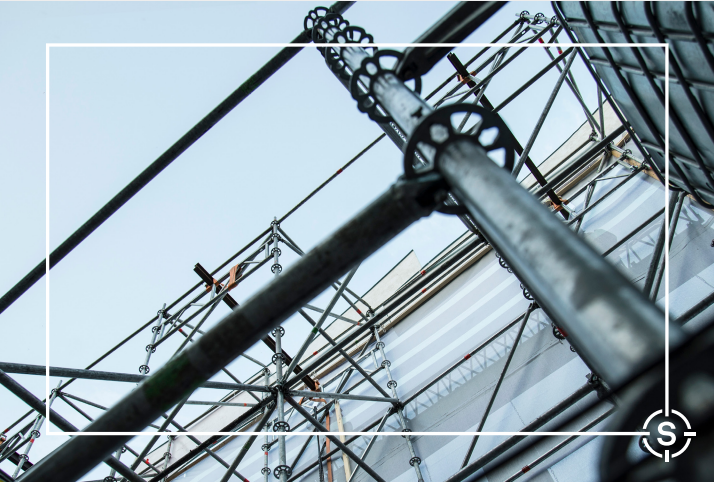This chapter relates to the chapter on working at
heights and provides guidance on using scaffolding on
a production set. It is primarily based on New Zealand
legislation and guidance issued by WorkSafe NZ.

All workers who undertake tasks using scaffolding should read and understand the section on minimum responsibilities.
Roles that have specific responsibilities, or influence, over setting up or managing work conducted using scaffolding should read the section on ‘planning and guidance considerations’ – this includes producers, directors, production managers, art directors, construction managers, heads of departments, assistant directors and health and safety advisers.
Definitions
Scaffolding is any advanced scaffolding, basic scaffolding or suspended scaffolding or any framework or structure, of a temporary nature, used or intended to be used for:
Scaffolding process is the planning for and/or the design, erection, inspection, alteration, use or dismantling of any scaffolding and/or related components. This includes all structures constructed using scaffolding components, such as falsework, temporary grandstands, lighting towers and stair access towers.
Everyone who undertake tasks using scaffolding should read and understand this section.
Workers should:
Everyone who has responsibilities, or influence, over setting up or managing work conducted using scaffolding should read and understand this section, as well as the minimum responsibilities for everybody.
This includes the production company, producers, directors, line producers, art directors, construction managers, heads of departments, assistant directors and health and safety advisers
Person in charge
The person in charge / those with responsibilities, or influence, over setting up or managing work conducted using scaffolding should ensure all scaffolding:
They must also:
All scaffolding should have:
The PCBU, likely to the be production company, must ensure workers are either sufficiently experienced to do their work or are adequately supervised by an experienced person, as well as adequately trained in the safe use of equipment in the workplace.
Anyone erecting scaffolding should:
Scaffolding over five meters
As outlined in the Best practice guidelines for working at height in New Zealand, if any part of the scaffold is five metres or more above the ground it must be erected, altered and dismantled by, or under the direct supervision of, a person with an appropriate Certificate of Competency.
There are courses available that will give you the skills and knowledge to work safely and erect non-notifiable prefabricated scaffolding up to five metres in height. Many manufacturers and suppliers provide training for the safe use of their scaffolding system. As a bare minimum you should at least have a good working knowledge of the manufacturer’s instructions.
Where work is performed using mobile scaffolds, the scaffold should be erected by a competent person and used in accordance to the manufacturer’s specifications.
Certificates of competency
Certificates of competence are issued by Scaffolding, Access & Rigging New Zealand Inc (SARNZ)5 under delegated authority from WorkSafe NZ.
To be issued with a certificate of competence individuals need to provide evidence of:
Ongoing certification requires continued involvement in the industry and proof of continued competence.
The National Certificate in Scaffolding (Elementary) (Level 3)
The National Certificate in Intermediate Scaffolding (Level 4)
The National Certificate in Scaffolding (Level 4), with strands in Advanced Scaffolding, and Suspended Scaffolding

ScreenSafe is not a hotline for specific Health & Safety issues or concerns, please direct these to your Health & Safety representative or WorkSafe
For more information about any of the initiatives ScreenSafe is working on please speak to your relevant Guild representative or contact info@screensafe.co.nz
© 2016 | Created by Green Chilli Design